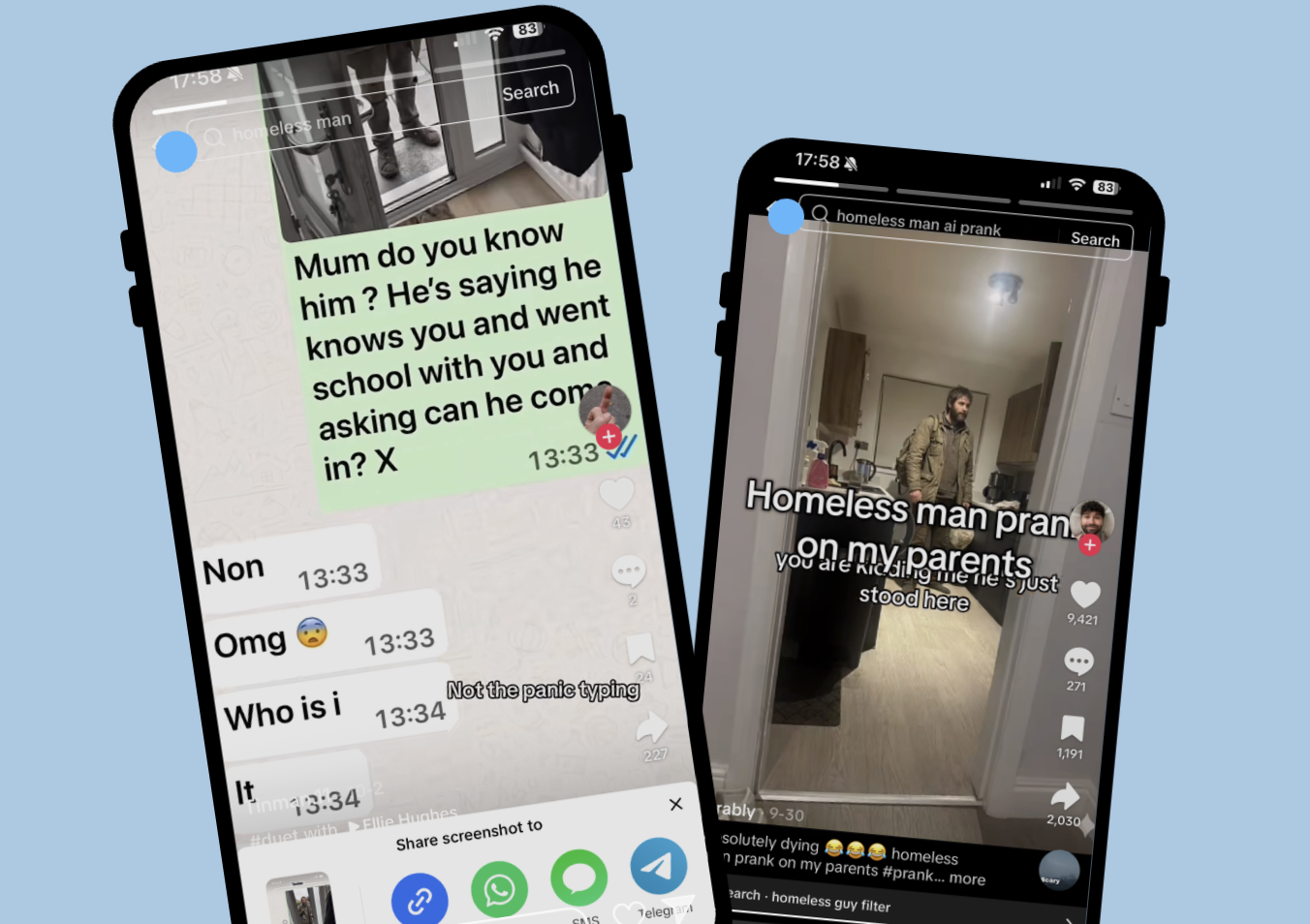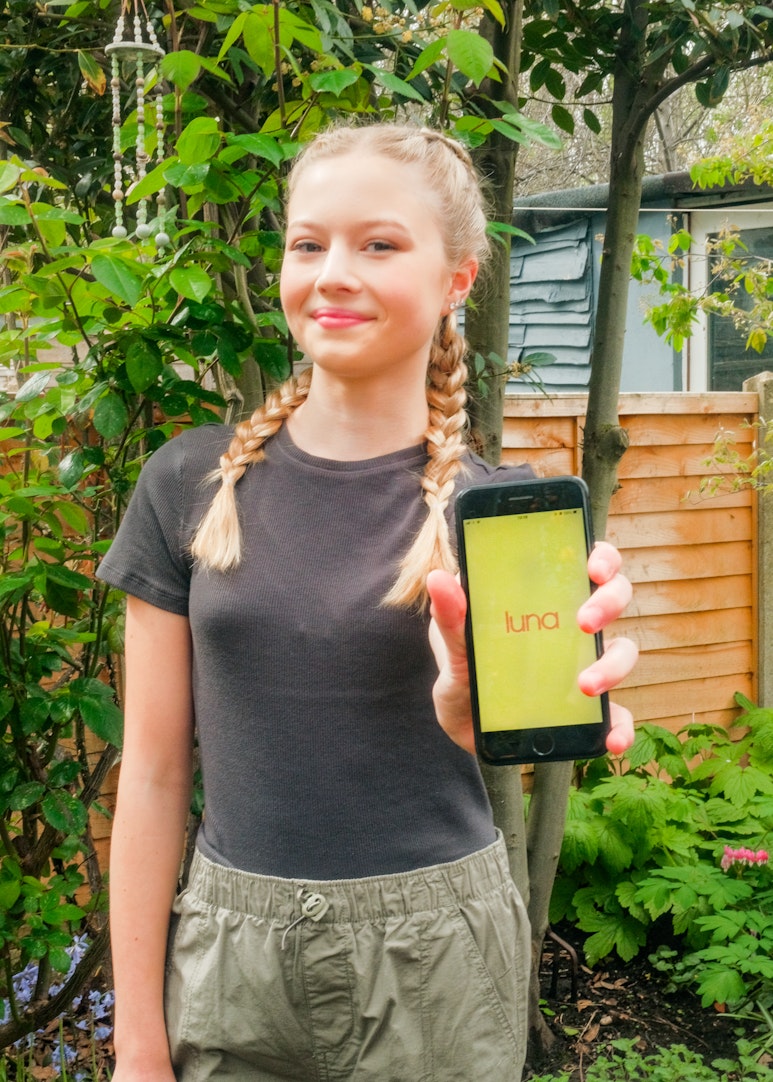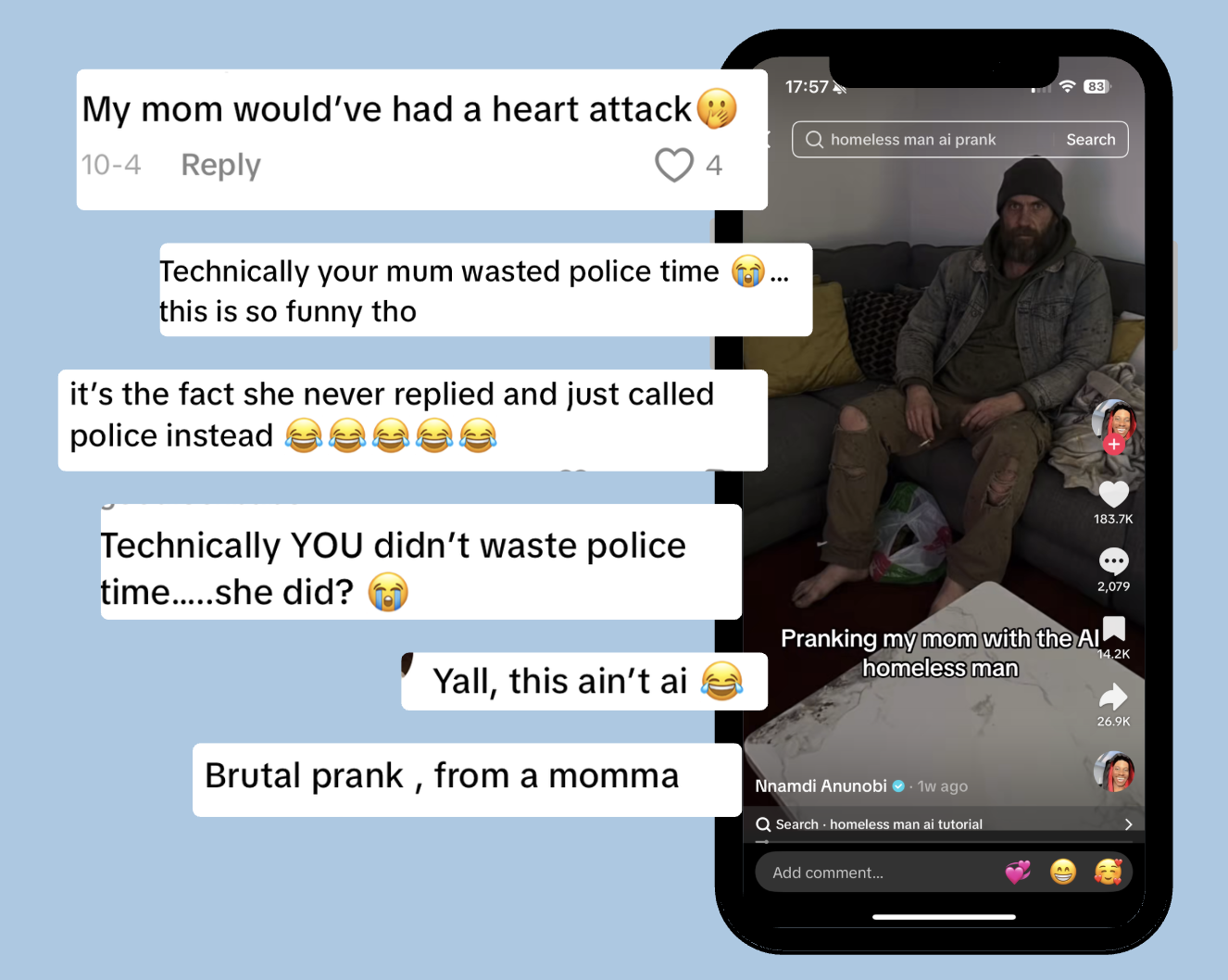
The “homeless man AI” prank
When a prank can go too far

Quick summary
- The prank involves teens generating lifelike AI images of a “homeless man” inside their home, then showing them to parents to capture scary reactions
- It raises real risks, such as emotional distress, misuse of emergency services, panic, and dehumanising people who are homeless
- Parents can respond by staying calm and having open talks with teens about respect and consequences

What is the "homeless man AI" prank?
There’s a new trend that teens are loving right now. However, parents and emergency services aren’t really seeing the funny side…
The prank works like this: teens use AI image generators to make a very real-looking photo of a “homeless man” sitting in their kitchen, lying on the sofa, or even sleeping in their room.
Then they send it to a parent or family group chat with something like, “I let this guy in, he needed help.”
Cue the panic.
The idea is to catch parents’ shocked reactions on camera and share them online.
For some teens, it’s about chasing likes and laughs which isn’t in itself a bad thing, but this prank raises concerns.
Why the homeless AI prank is not “just a bit of fun”
At first glance, it might look like harmless mischief.
But when you dig deeper, it’s easy to see why this trend has sparked so much concern.
- It can be genuinely frightening for parents to see a stranger in their home
- A few cases have involved unnecessary calls to emergency services, which can take time away from real people in need
- Using homelessness as a punchline can make light of a very real issue, and it risks teaching teens that someone else’s struggle is “funny” content
- For parents who aren’t used to seeing generated photos, it can feel impossible to tell what’s real

How to talk to your teen about it
If your teen mentions the prank or tries it on you, it’s okay to feel frustrated.
But rather than going straight to punishment mode, try turning it into a learning moment.
Talk about empathy
At its core, this prank uses a marginalised community to scare people.
Your teen may not understand this, so it's useful to have a discussion about the deeper meaning behind the prank.
Explain why using homelessness as a joke can hurt real people.
You might even explore ways to help – donating to a shelter, volunteering at a soup kitchen, or learning more about homelessness together.
Discuss the risks of AI
Have a chat about how easy it is to fake images now.
You could even test an AI image generator together, to show how convincing it can be for family members who may not be as discerning about AI.
Explain the real-world consequences
Let your teen know that these pranks can spiral fast.
Even if it’s “just a joke,” it could still lead to panic, hurt feelings, or legal trouble if emergency services get involved.
Keep communication open
If your teen enjoys creating content, encourage them to think about who it impacts.
The goal isn’t to stop them from being funny, it’s to help them choose jokes that don’t hurt others.
Helping your teen build empathy online
The prank is just one example of how fast trends evolve, and how easily social media can blur the line between humour and harm.
You don’t have to hover over your teen’s every post.
But helping them think critically and compassionately about the content they make and share can make a real difference to their digital footprint and understanding of others as they grow older.
How we created this article:
luna's team of experts comprises GPs, Dermatologists, Safeguarding Leads and Junior Doctors as well as Medical Students with specialised interests in paediatric care, mental health and gynaecology. All articles are created by experts, and reviewed by a member of luna's senior review team.
We'd love to keep in touch!
Sign up to our parent newsletter for emails on the latest teen trends, insights into our luna community and to keep up to date
By signing up, you are agreeing that we can use your email address to market to you. You can unsubscribe from marketing emails at any time by using the link in our emails. For more information, please review our privacy statement.